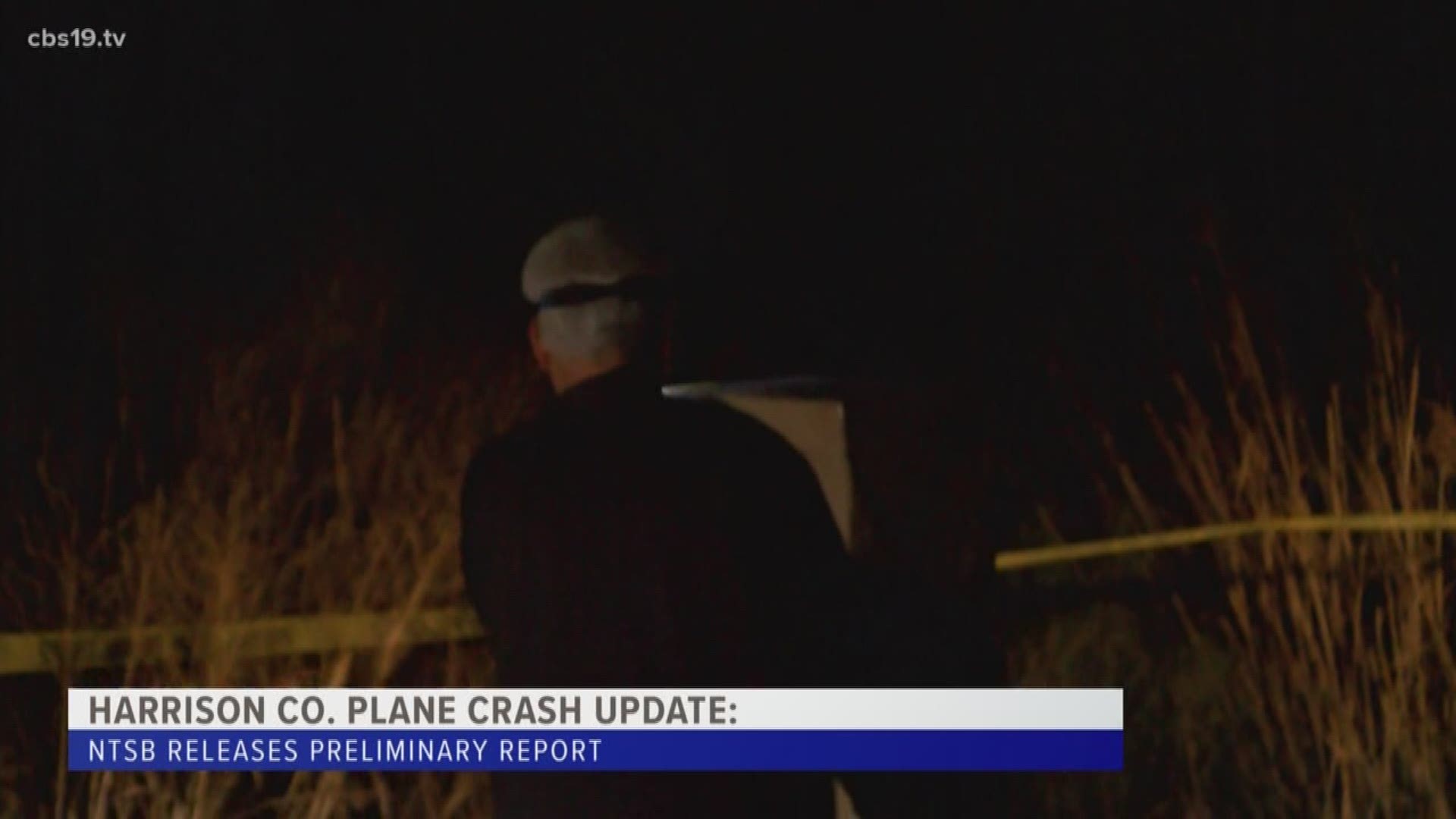HARRISON COUNTY, Texas — The National Transportation Safety Board has not confirmed an official cause for a plane crash that killed four people, including the pilot, on March 9 in Harrison County.
However, with the release of the agency's preliminary report, more details give insight into the qualifications of William Robert Kendrick, who was the pilot of the plane.
"If a pilot is not qualified or proficient to operate an airplane under the conditions of a particular flight, then that pilot is creating a hazard," said Robert Katz, a commerical pilot and certified instructor in Dallas.
His experience in the field expands three decades. Katz decided to look into the pilot's credentials after learning about the crash.
"Once the pilot's name was identified, I used the public portal provided by the Federal Aviation Administration to look at his credentials," Katz said. "What I discovered were three anomalies that affect public safety very seriously."
According to the NTSB, the plane was destroyed when it collided with trees and terrain during a descent near the crash site.
After reviewing the pilots credential, Katz says Kendrick should not have been flying this specific plane at this particular time in the first place.
"Number one: It appears that his medical certificate was either suspended or revoked, meaning that he would have absolutely no privilege to operate any airplane under any circumstances," Katz explained.
The report states Kendrick's last medical exam was dated August 8, 2018, when he applied for a FAA third-class medical certificate.
The pilot reported on the application for that medical certificate that he had accumulated 1,200 hours of total flight time and zero hours of flight time in the six months leading up to the examination, according to the NTSB.
Initial information from the Federal Aviation Administration revealed Kendrick had a private pilot certificate for a single engine plane, but the aircraft involved in the crash was a twin engine.
"Secondly, he did not possess a multi-engine rating, which would be required for the type of airplane involved in this incident," Katz said.
Some of the weather recorded during the morning of the crash was scattered clouds, light thunderstorms and rain.
"Lastly, he did not have an Instrument Airplane Rating, which is a separate standalone privilege required to take an aircraft into weather other than clear skies," Katz said.
Katz says Kendrick not having this privilege is important because weather is a suspected factor in the cause of the accident.
"Leading me to believe that this pilot may have become disoriented in flight," Katz said. "The end would have been very ugly for everyone on board."

